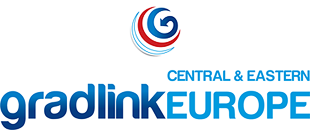
Neurodiversity: How difference can help your business grow
Neurodiversity is a term being used in the media and by companies across the globe but what does it actually mean for employers? Here at GradLink UK, we’ve noticed an increase in high grossing workforces who are changing how they recruit, to be more inclusive of people who don’t fit the standard mould.
According to a recent article in the Financial Times employees with learning difficulties such as Dyslexia, Dyspraxia and Dyscalculia can actually be beneficial to employers. Issues such as Dyslexia, which has an impact on reading, writing and spelling are more commonly recognised, while Dyspraxia and Dyscalculia, where sufferers can have difficulty with coordination or with maths, are lesser known. What has been noticed, though, is that although a person who is Dyspraxic might struggle with day-to-day time management, they could have skills, which help them excel with clients or in a creative capacity.
Who’s leading the way?
Companies like Microsoft and EY are the trailblazers in this space, providing inclusive workplaces that are taking the inequity out of learning disabilities. Microsoft has even created what they term an inclusive hiring programme, which breaks down convention and adapts the hiring process to include those with Autism. “By diversifying our workforce and focusing on the particular needs of a small group of people, we find that we can innovate and create a team of broader problem solvers equipped to better understand Microsoft UK and meet the needs of our diverse customers,” said Theresa McHenry, HR Director,
What are the benefits?
Microsoft’s aim is to bring out the best in candidates who may struggle with one-on-one questioning but thrive when given alternative tests. By doing this, they are creating a team of people who will be able to bring their best qualities to the role rather than rehearse a set of answers to get through an interview process. These companies are celebrating unique talents and reaping the benefits by hiring employees that excel in other cognitive areas.
How to do it for your business
Here are some simple ways in which you can start working inclusivity into your recruitment process…
- Add a box to your application form. Give your candidates an opportunity to showcase their skills that don’t fit into the standard competencies but give them the edge over the competition.
- Adapt recruitment days. While not all companies have the resources to support additional interview dates like Microsoft, it is still possible to create flexibility. If you have been made aware of a disability or learning difficulty it’s worth finding out where you could help your candidates to really make them shine on the day so they can show you their strengths.
- Assign a mentor. To continue to support new staff, a mentor can help you notice where those star qualities lie, and assist with the areas that need support.
Is it all good?
While Microsoft’s model has been a huge success, there is of course the counter argument cited in the Financial Times by Nicola Whiting, CEO at Titania. “As soon as you ring-fence people, you’re saying this person is different,” she suggests.
Here at GradLink, we think the idea behind this inclusive recruitment drive is to embrace differences rather than creating barriers – a new way to enrich businesses with exciting qualities and potential, which may have previously been overlooked. These honest conversations are more likely to include and support employees, rather than isolating them.
Bill Gates said recently in an interview with CNBC that intelligence “takes many different forms”. What more could you do to include a wider pool of brilliance to your business?
We’ve got hundreds of CVs from talented international students just waiting for you at GradLink UK. Why not sign up for our free service today and connect with top talent from the UK’s best universities?
Please confirm If you want to unregister
You have been unregistered from gradlink







